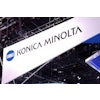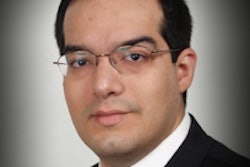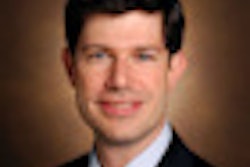Radiologists should fight the trend of outsourcing night call to teleradiologists, according to a presentation given at last week's RSNA meeting in Chicago by outspoken nighthawk foe Dr. David C. Levin from Thomas Jefferson University.
"When hospital-based radiology groups contract out night coverage to a nighthawk firms, it sends the wrong message to the hospital and to colleagues in other specialties," Levin told session attendees. "The message is that radiologists are lazy, that they're overpaid and can thus afford to pay cheaper substitutes at night, and that anyone can do their work."
Use of teleradiology services is quite popular, however, Levin said. He cited a 2007 survey that included 487 responses and showed the use of off-hours teleradiology by practice size and type. The following percentages of practices used off-hours teleradiology services:
- 38% of practices with up to four radiologists
- 62% of practices with five to 10 radiologists
- 58% of practices with 11 to 14 radiologists
- 52% of practices with 15 to 29 radiologists
- 10% of practices with more than 30 members
Private practices represented by far the majority of teleradiology users, at 59%, while 15% of academic groups used off-hours teleradiology.
So many practices are using teleradiology because there are perceived advantages to outsourcing, Levin conceded. These include the service relieving radiologists of night or weekend call, allowing smaller groups access to subspecialty reads and coverage during times of high demand, providing coverage to hospitals in underserved areas, and improving turnaround times.
But the nighthawk concept is really a Trojan horse to the radiology community, according to Levin, sparking doubt in other physicians, particularly emergency department doctors, about the value that radiologists at their hospitals bring to the arrangement other than being middlemen.
"Nighthawk service commoditizes radiology and leads to lower fees for radiologists," Levin said. "And nighthawks are beginning to oust radiology groups from their hospital contracts. It can lead to poor-quality imaging and encourages encroachment by other specialists."
Does teleradiology produce high-quality radiological service? Not necessarily, according to Levin. Teleradiologists are forced to read fast, which can mean more mistakes, he believes. They also have little to no contact with referring physicians or patients, little to no opportunity to consult with colleagues on tough cases, and little to no access to patient charts, pathology or surgical reports, or imaging results from other modalities, he said.
"And there's no oversight of teleradiologists' performance by hospital quality assurance or risk management committees, or by a chairman or senior member of their group," he said.
Additionally, outsourcing doesn't always benefit the radiology group, according to Levin, who cited an experience described by Dr. Cynthia Sherry, of Texas Health Presbyterian Hospital Dallas, when her group outsourced to a nighthawk firm. Some of the group's referring physicians were so upset with the quality of the nighthawk coverage that the group lost one of its hospital contracts, which affected its reputation and made it difficult to win other bids (Journal of the American College of Radiology, March 2010, Vol. 7:3, pp. 222-223).
Levin advises radiology groups to avoid contracting with nighthawk firms; he believes they should cover their own practice 24 hours a day, seven days a week.
"If you're a small group, consolidate with other small groups into a larger one, to get more subspecialty expertise and more people to cover nights and weekends," he said. "Or work out an arrangement with a nearby academic department for subspecialty reads or overreads as needed."




















